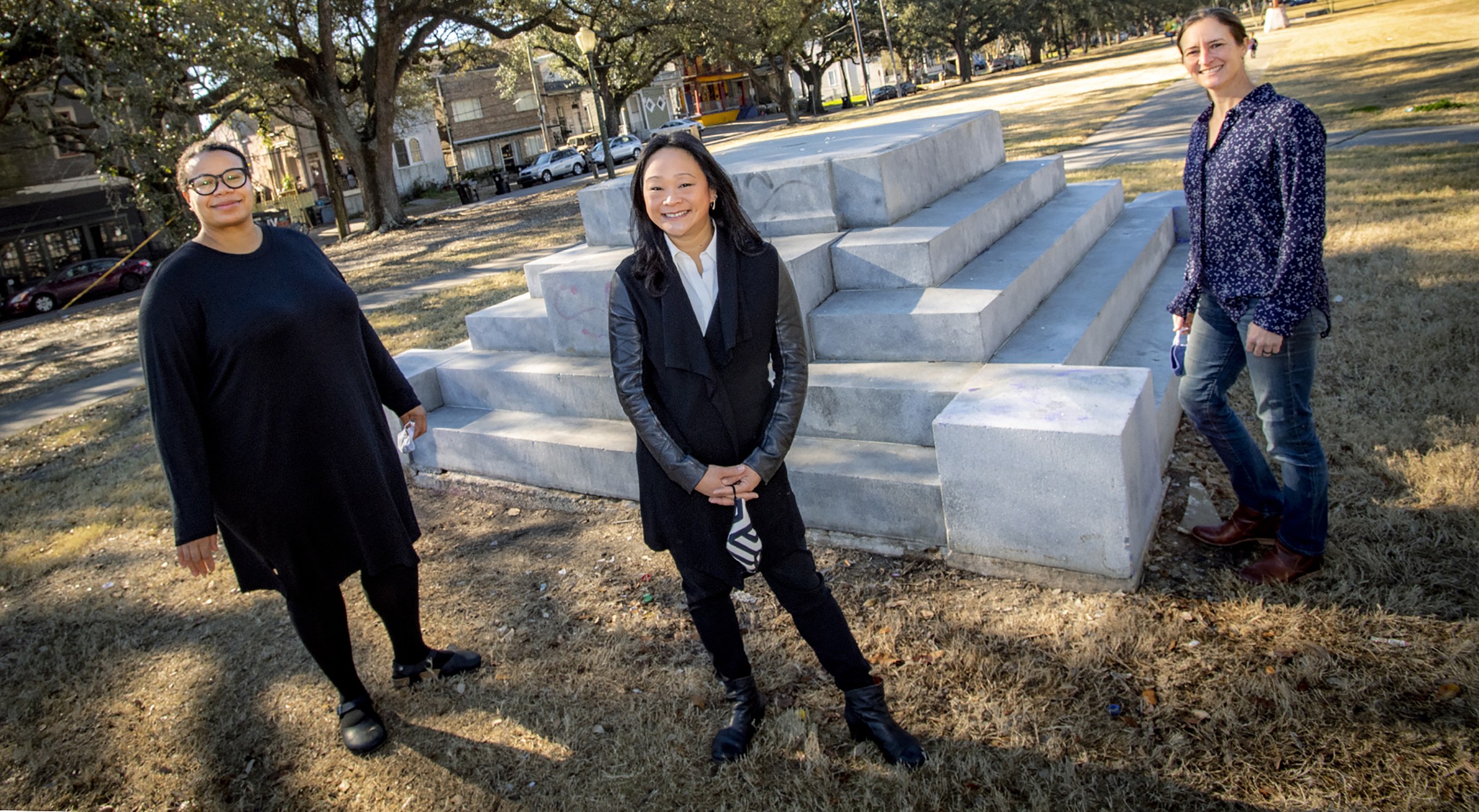Racial injustice in public space

february 15, 2021
Researchers from the Tulane University School of Architecture and the School of Science and Engineering are embarking on a project that they hope answers questions about racial injustice and its impact on the design of urban spaces, monuments and memorials.
The project, “Public Space and Scrutiny: Examining Urban Monuments Through Social Psychology,” recently won a 2020 SOM Foundation Research Prize, created by the architectural firm Skidmore Owings and Merrill to advance the design profession’s ability to address the world’s most critical issues.
“With fewer than one in five new architects identifying as racial or ethnic minorities, our profession has some catching up to do if we intend to reflect the public for whom urban spaces are designed,” said Tiffany Lin, an associate professor of architecture. "This project proposes a study of existing public spaces, monuments, and memorials through the lens of social psychology in order to establish a broader frame of reference for future design."
Lin will be conducting the study with Emilie Taylor Welty, professor of practice at the School of Architecture, and social psychologist Lisa Molix, an associate professor in the Department of Psychology at the School of Science and Engineering.
The team will use an interdisciplinary approach to study how members of the community react to public spaces and monuments that memorialize contentious historical figures and events. Those reactions could range from stress and perceptions of discrimination to inclusion and empowerment. Through focus groups, video voice studies and surveys, researchers will identify elements of design, such as scale, materiality, tactility, symbolism and color, that contribute to the general public’s perception of public spaces and monuments.
They will use their findings to develop the framework for an advanced architecture research studio that examines strategies to bridge the gap between architects and the general public, specifically when designing for urban spaces marked by racial injustice.
“As we work to teach values of design that build a more sustainable and equitable future, projects such as this can help both students and professionals in our discipline gain a deeper understanding of and commitment to the relationship between design and social justice," Welty said.
Molix, an expert in the health and well-being among marginalized populations, said the project exemplifies how to integrate community-informed social justice work in the laboratory, classroom and studio. She sees New Orleans, with its abundance of monuments and memorials, as the ideal location to embark on such a study.
“One of the first conversations I had when I interviewed at Tulane was about how historical figures, monuments, and symbols are perceived,” Molix said. “I have had many opportunities to revisit these conversations as New Orleanians have become increasingly vocal about the removing, renaming or redesigning of some of our public spaces.”
The project will use qualitative and quantitative scientific methods to study perceptions of existing public spaces, monuments and memorials to directly inform both design pedagogy and future design/builds.
Lin noted that interdisciplinary research can often be difficult to negotiate, but her friendship with Molix and Welty helps engender honest discussions on the topics of racial inequity and social justice.
“We are naturally curious about each other’s expertise and not afraid to ask difficult questions in order to learn from one another,” Lin said. “We are excited about this collaboration as it seems to be an ideal amalgamation of our research and teaching interests.”
Welty agreed. “I see this research project as an opportunity to better design public spaces based on a data rich understanding of different perceptions and how we experience the world around us. It’s also a chance to work with friends across disciplines to learn about process and research methods from each other.”
Story by Barri Bronston, Tulane News
RELATED

Edson Cabalfin named new Associate Dean for Equity, Diversity, and Inclusion
A Message From Iñaki Alday, Dean and Richard Koch Chair in Architecture:
I am very excited to announce that we continue making important steps in our work toward equity, diversity and inclusion. . .

Sukkah in the age of coronavirus
Every year, for the past 11 years, students in the Tulane School of Architecture have built a sukkah, an open-air hut-like structure under which Jews celebrate Sukkot, a week-long fall harvest festival.